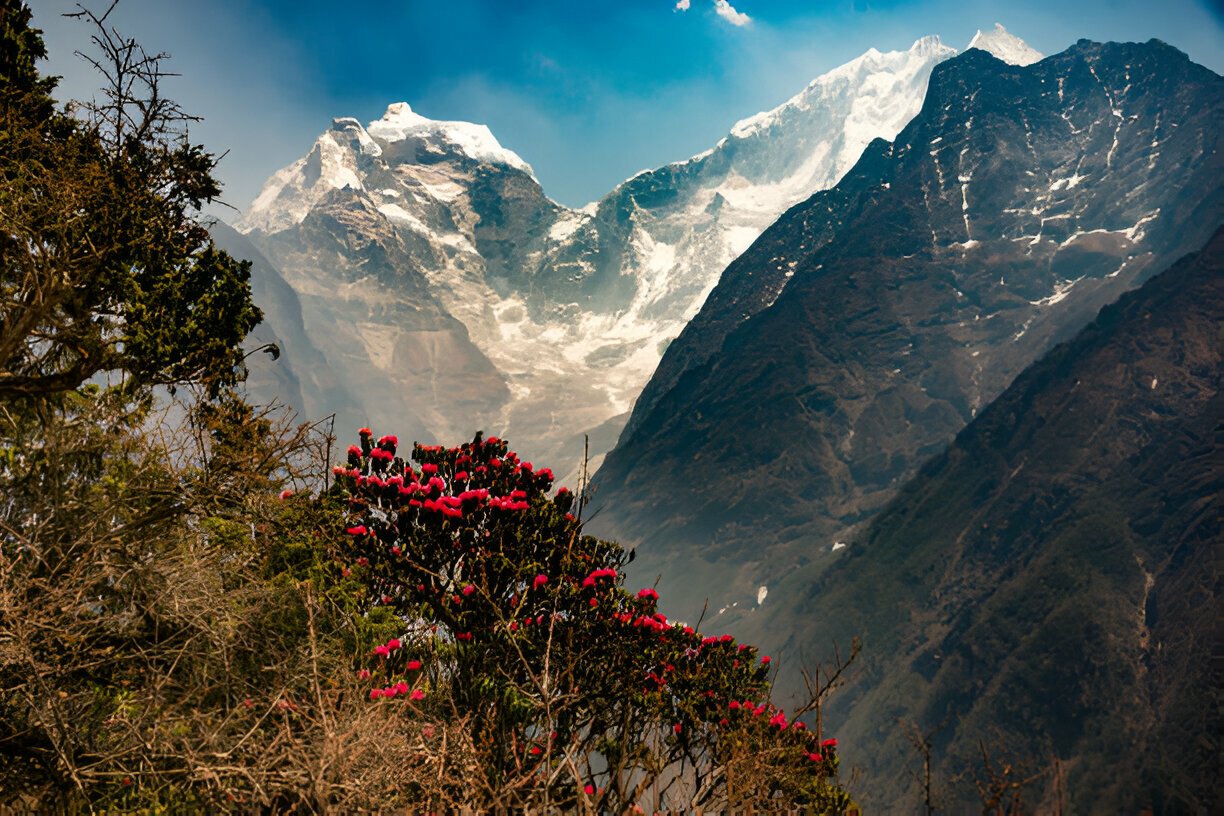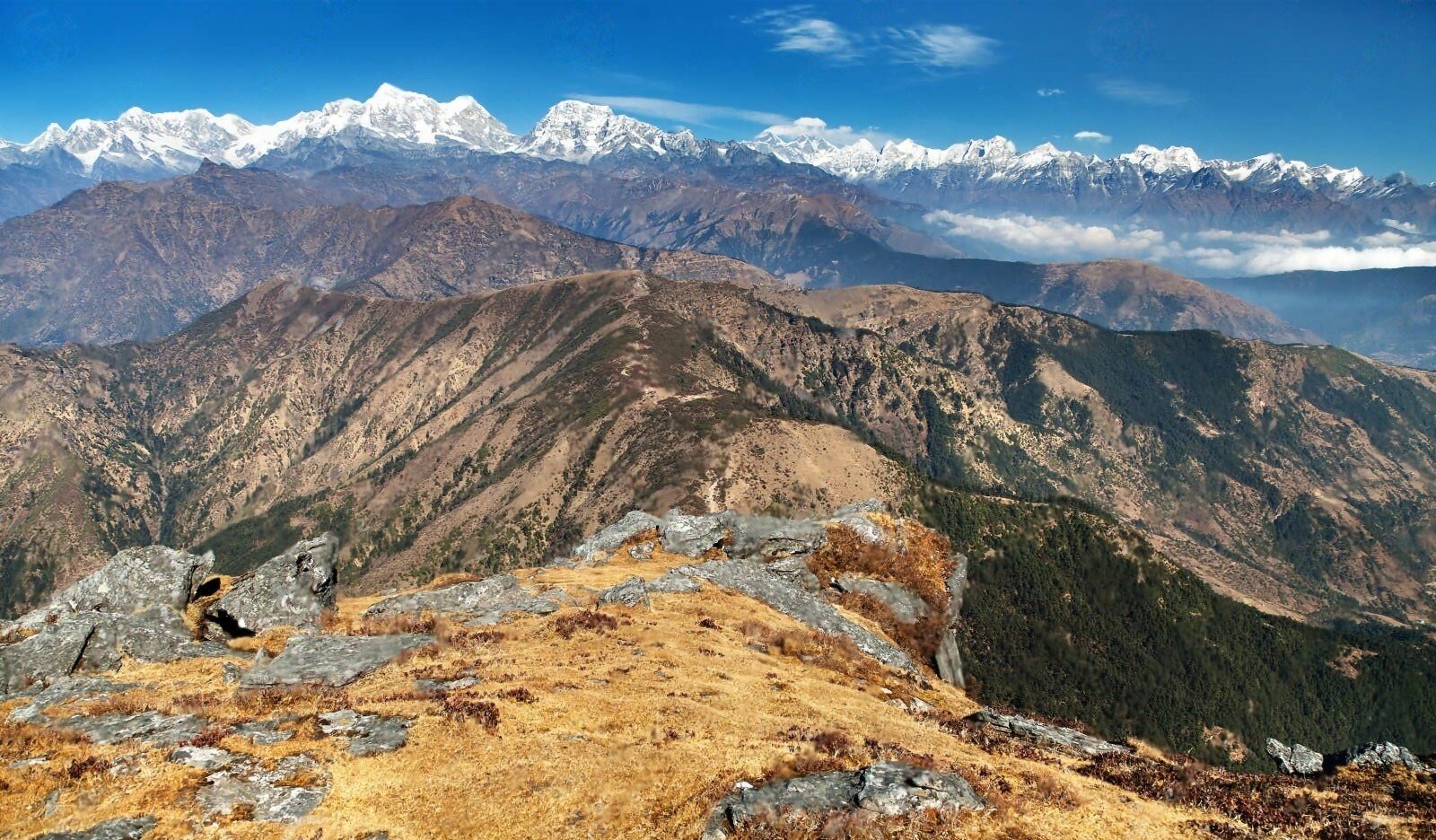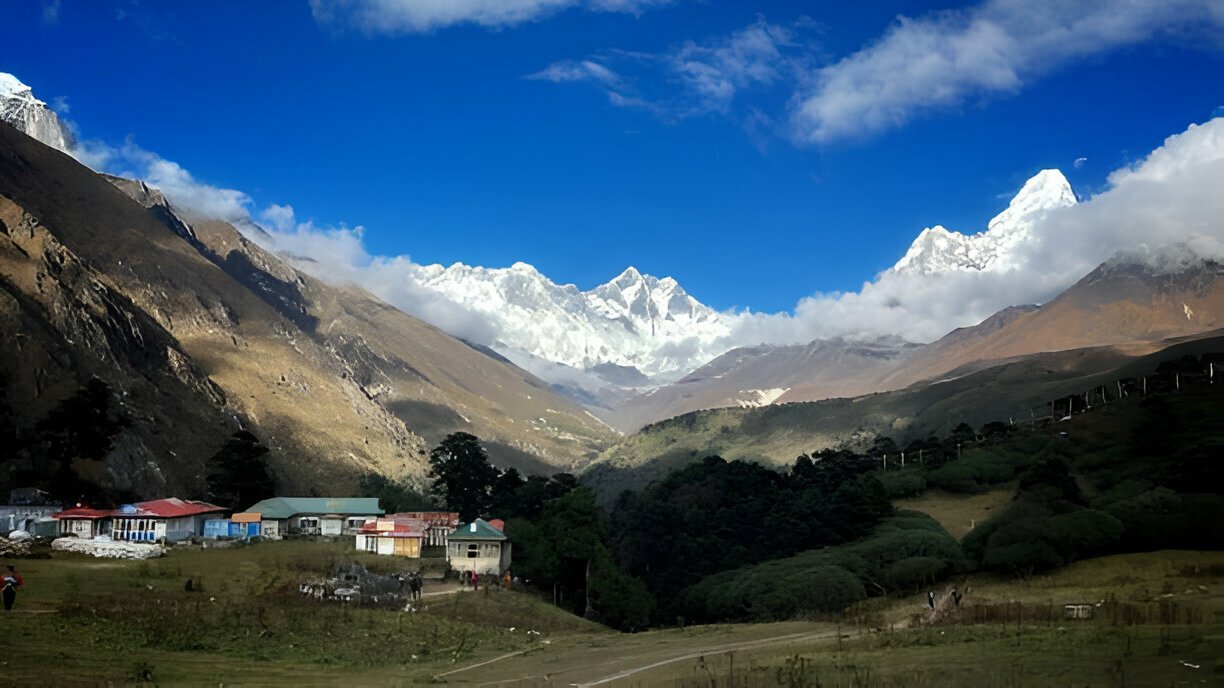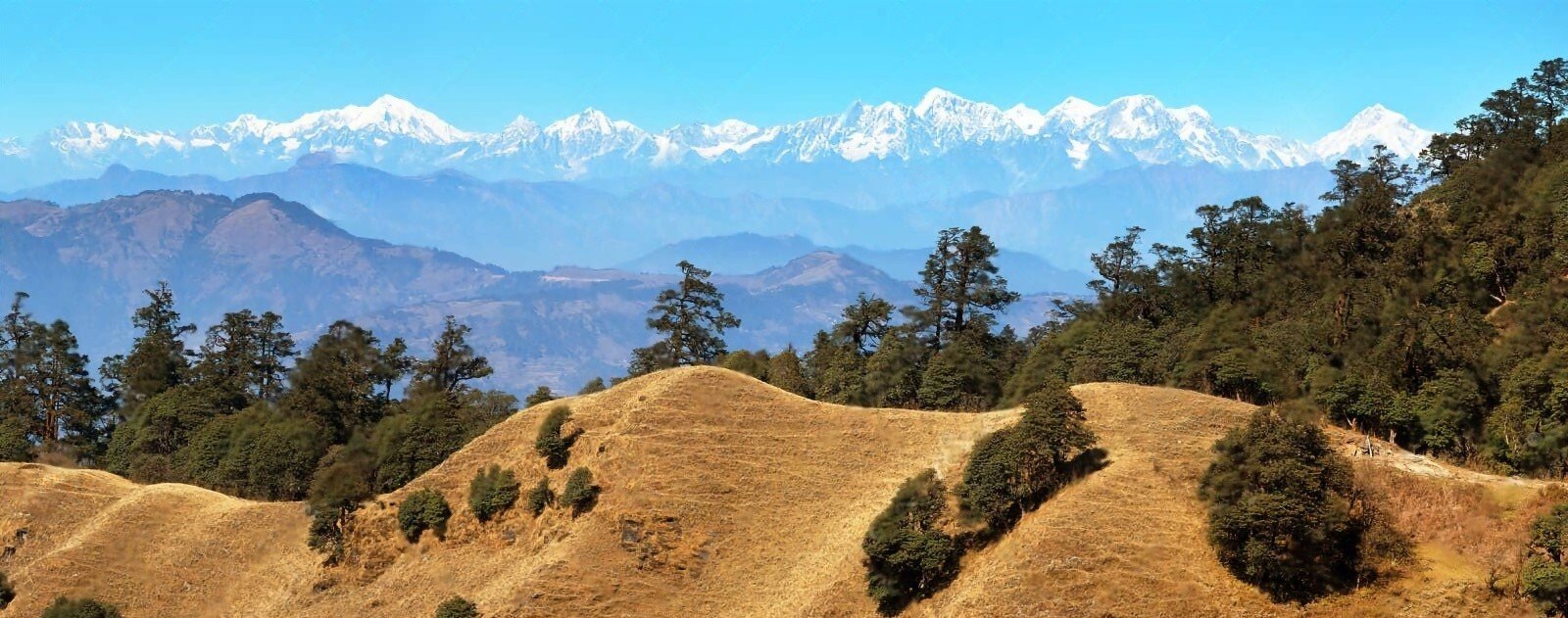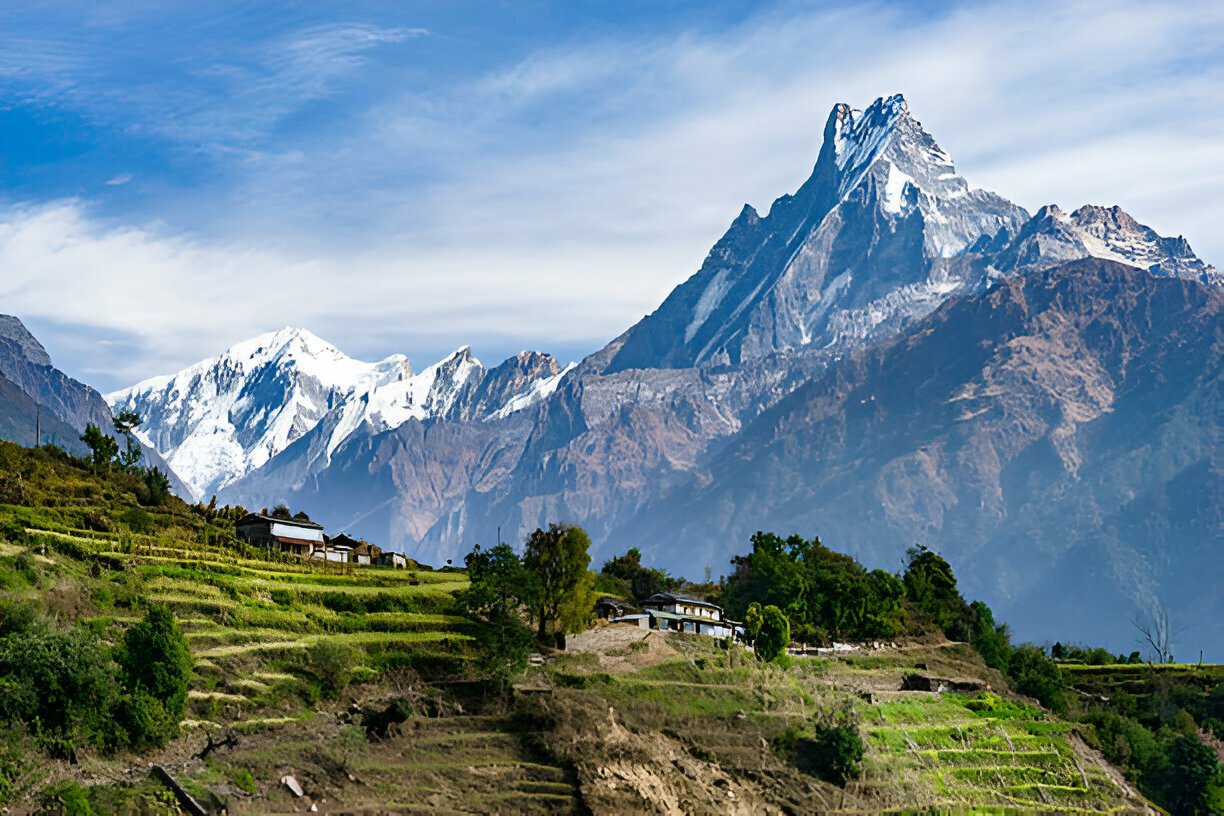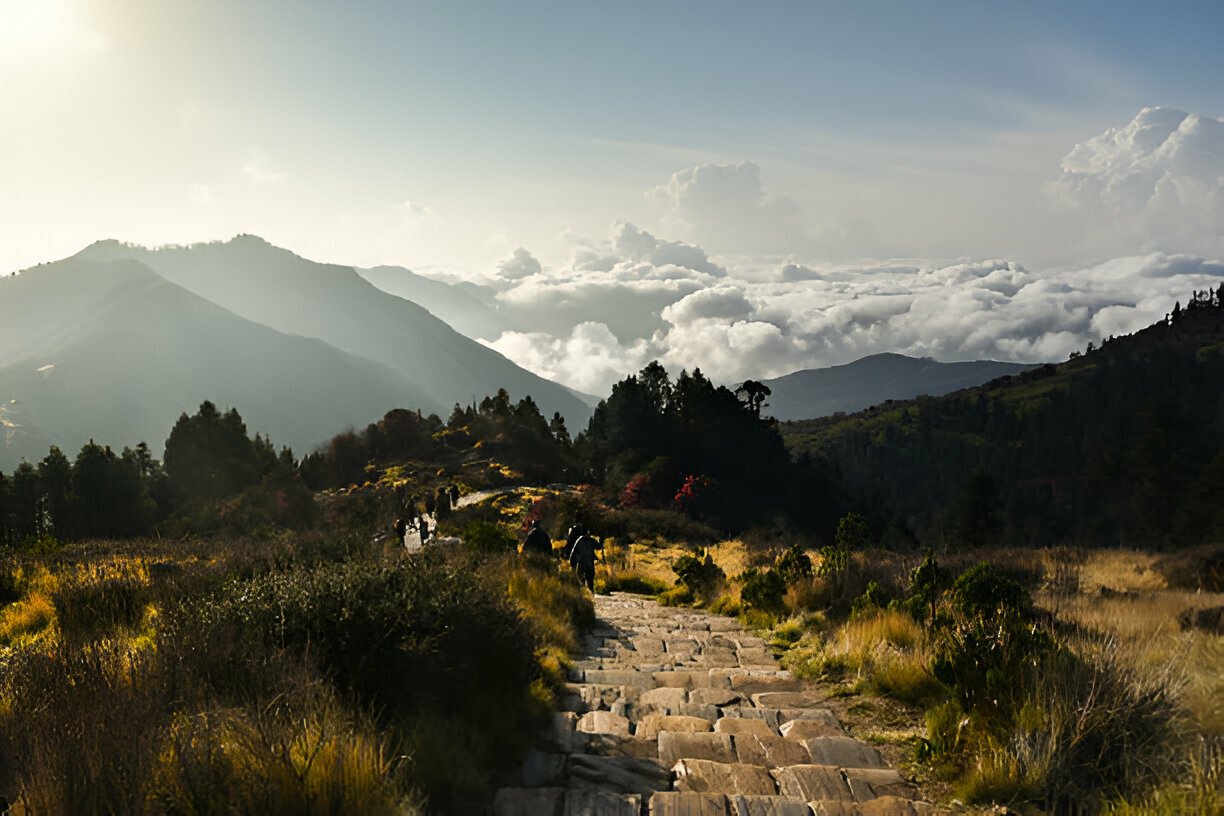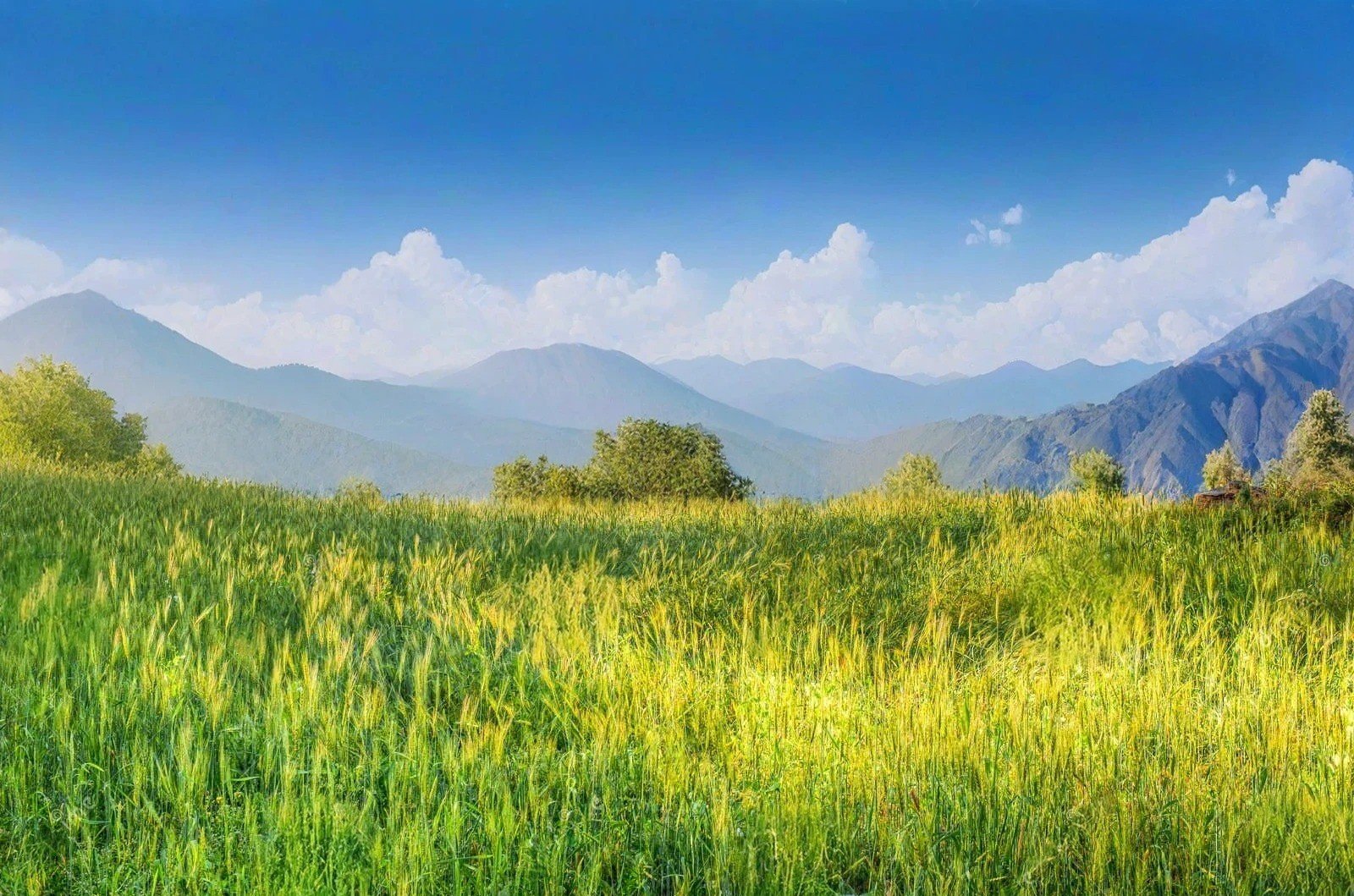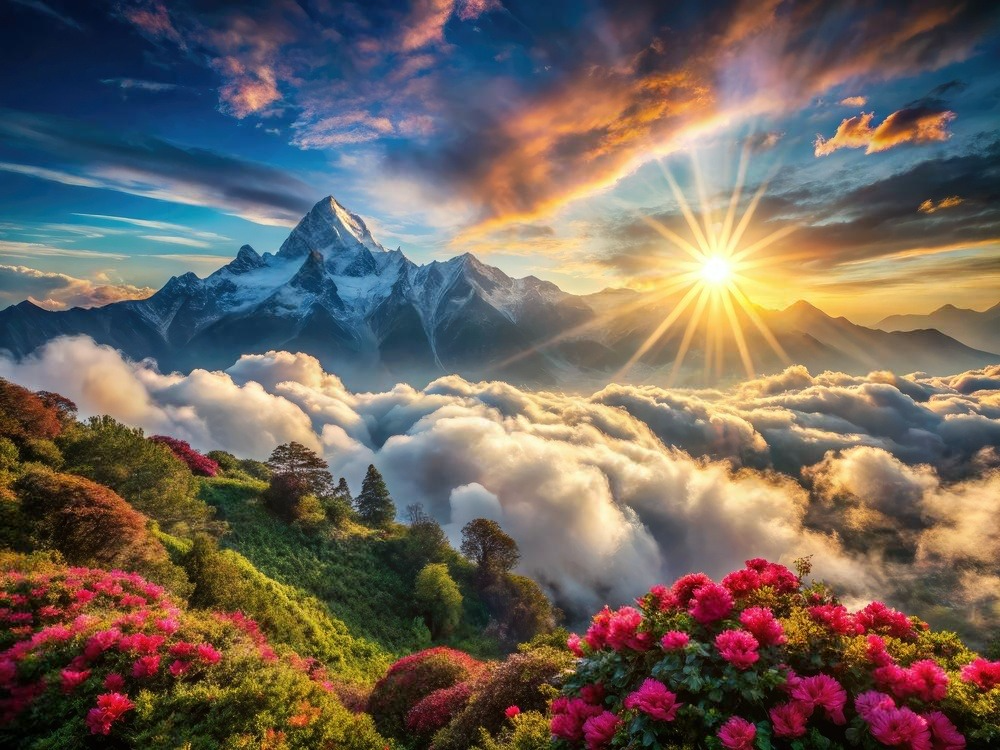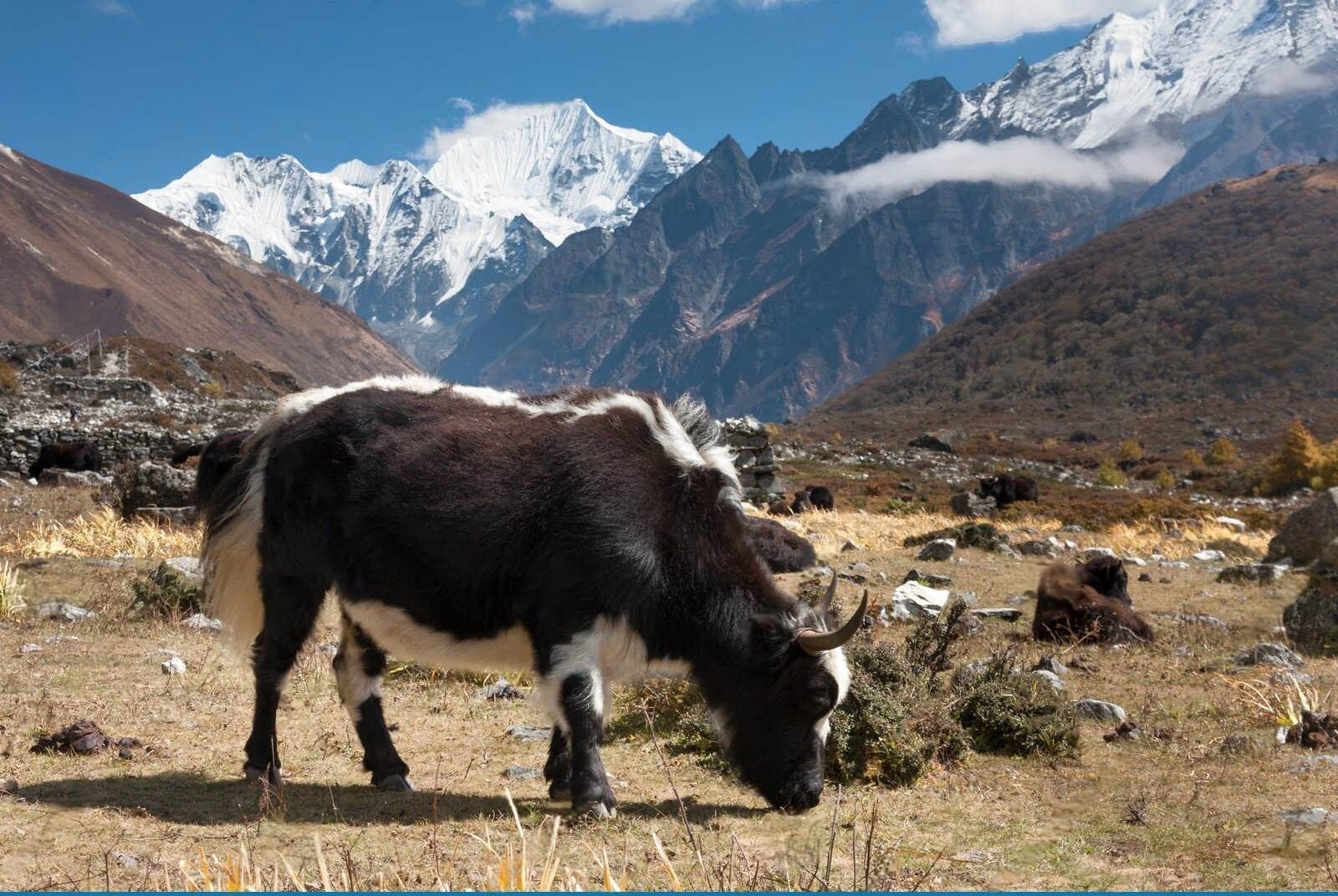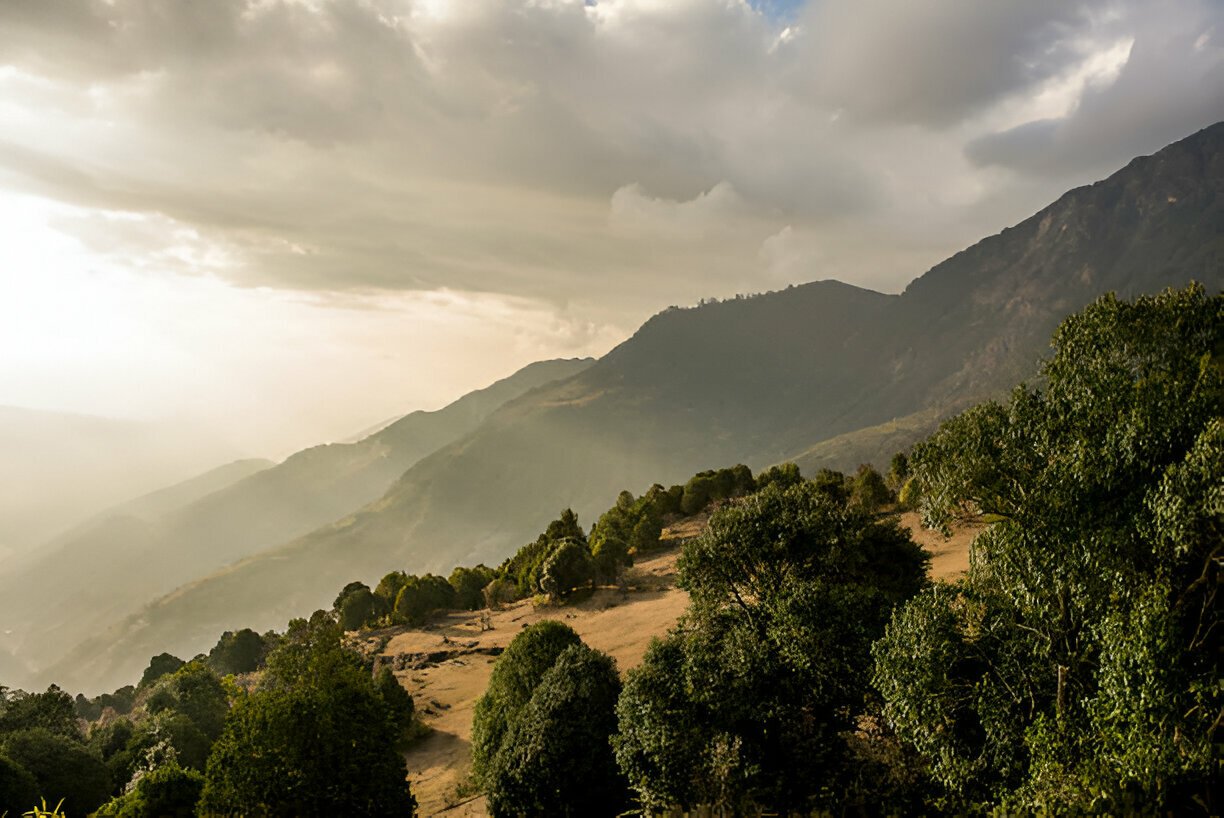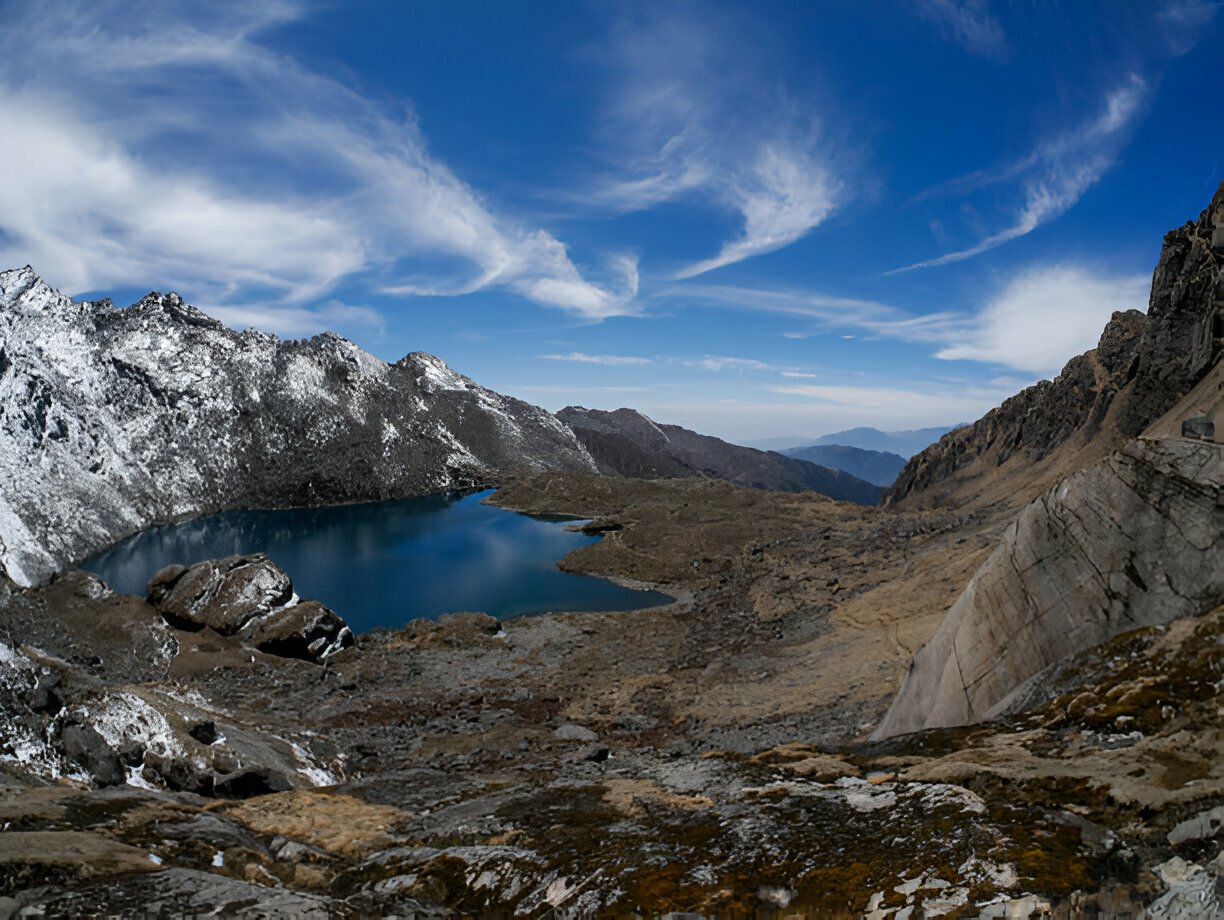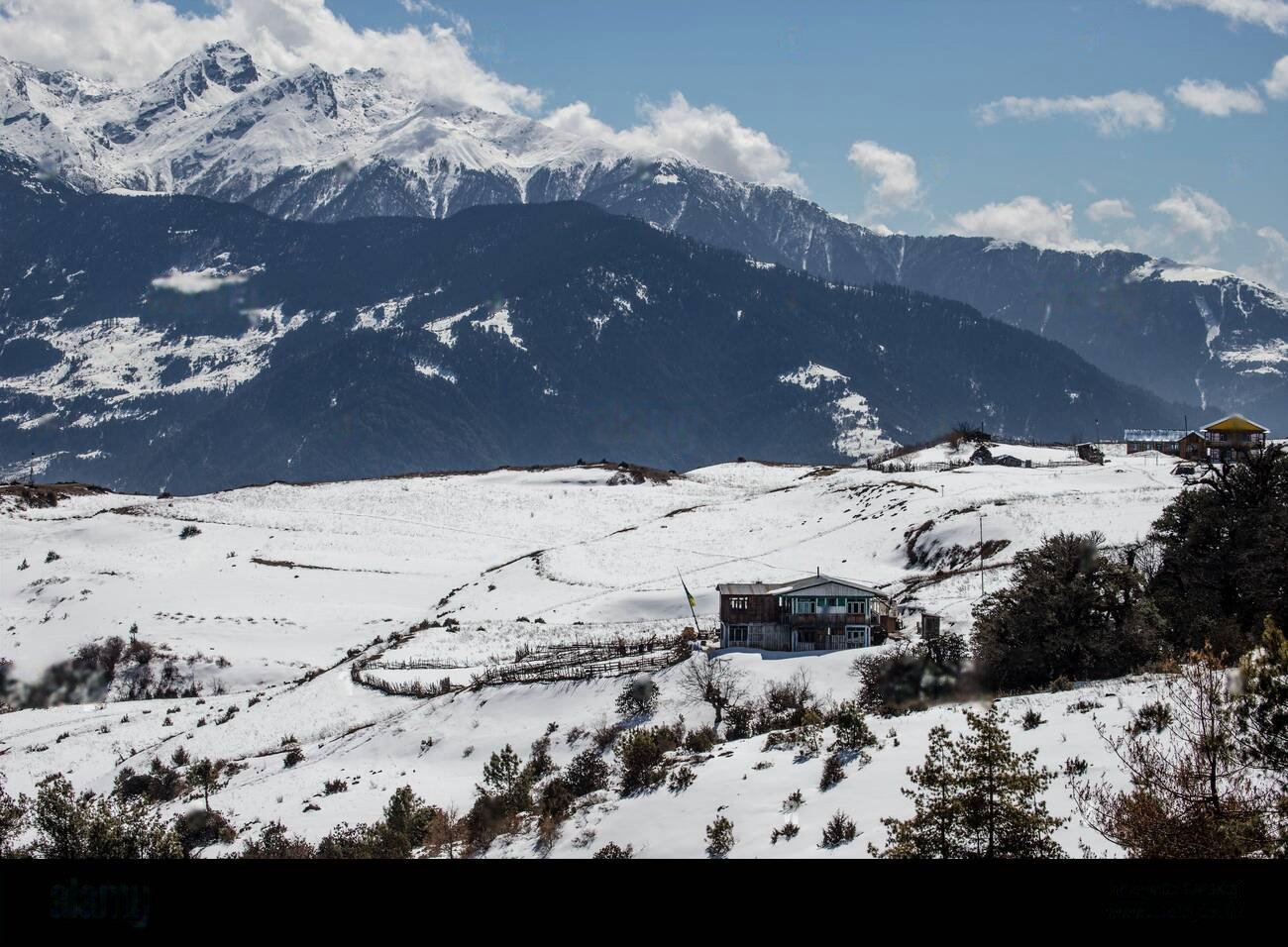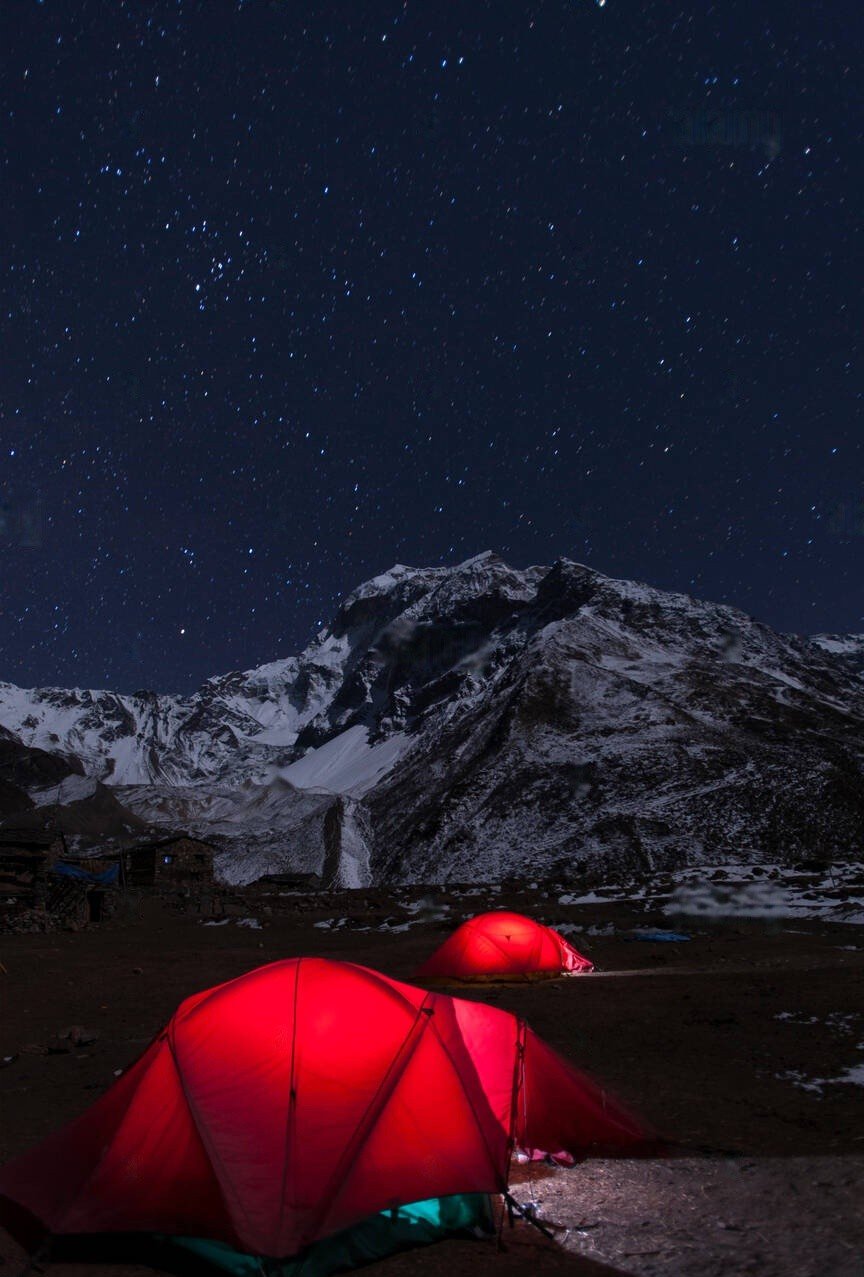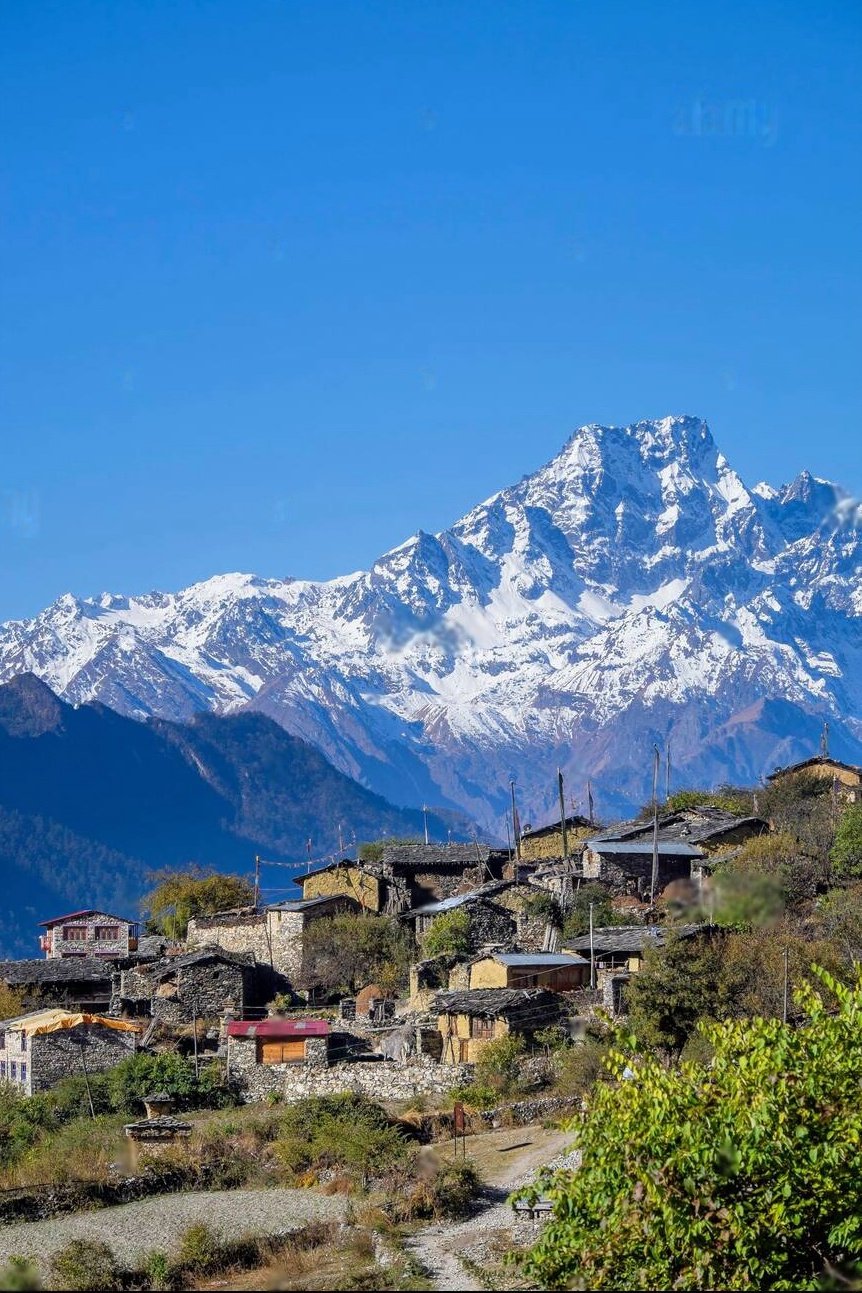 About this Trip
About this Trip
The Manaslu Circuit Trek represents an extraordinary blend of natural splendor and cultural richness. What makes this trek special is its off-the-beaten-path character, offering the grandeur of the Himalayas without the crowds found on more popular routes.
As you ascend through the Budi Gandaki Valley, the landscape transforms dramatically. The trail begins in the humid, subtropical regions near Soti Khola, with lush vegetation and terraced rice fields. Gradually, the terrain shifts to alpine meadows and barren landscapes as you approach the higher elevations. Each day brings new vistas, with Manaslu revealing its magnificent face in stages, creating a sense of anticipation throughout the journey.
The cultural aspect of the trek is particularly compelling. The lower regions are home to Hindu Gurung and Tamang villages, while the upper reaches feature Tibetan Buddhist communities that maintain strong ties to their ancient traditions. Monasteries in Lho, Sama Gaon, and other villages offer glimpses into spiritual practices that have endured for centuries, largely untouched by outside influence despite the slowly growing number of trekkers.
Physically, the trek challenges participants with long ascents and the formidable Larkya La Pass (5,160m), as well as the effects of high altitude. However, the carefully planned acclimatization days built into most itineraries allow the body to adapt gradually, making the trek achievable for reasonably fit individuals. The sense of achievement upon crossing the Larkya La Pass, with its sweeping views of Himlung, Cheo Himal, and the Annapurna range, creates an indelible memory.
Throughout the journey, the connections formed with fellow trekkers, guides, and porters add another dimension to the experience. Sharing meals in simple tea houses, exchanging stories, and encouraging one another through challenging sections forms bonds that often last well beyond the trek itself.
The Manaslu Circuit Trek represents an extraordinary blend of natural splendor and cultural richness. What makes this trek special is its off-the-beaten-path character, offering the grandeur of the Himalayas without the crowds found on more popular routes.
As you ascend through the Budi Gandaki Valley, the landscape transforms dramatically. The trail begins in the humid, subtropical regions near Soti Khola, with lush vegetation and terraced rice fields. Gradually, the terrain shifts to alpine meadows and barren landscapes as you approach the higher elevations. Each day brings new vistas, with Manaslu revealing its magnificent face in stages, creating a sense of anticipation throughout the journey.
The cultural aspect of the trek is particularly compelling. The lower regions are home to Hindu Gurung and Tamang villages, while the upper reaches feature Tibetan Buddhist communities that maintain strong ties to their ancient traditions. Monasteries in Lho, Sama Gaon, and other villages offer glimpses into spiritual practices that have endured for centuries, largely untouched by outside influence despite the slowly growing number of trekkers.
Physically, the trek challenges participants with long ascents and the formidable Larkya La Pass (5,160m), as well as the effects of high altitude. However, the carefully planned acclimatization days built into most itineraries allow the body to adapt gradually, making the trek achievable for reasonably fit individuals. The sense of achievement upon crossing the Larkya La Pass, with its sweeping views of Himlung, Cheo Himal, and the Annapurna range, creates an indelible memory.
Throughout the journey, the connections formed with fellow trekkers, guides, and porters add another dimension to the experience. Sharing meals in simple tea houses, exchanging stories, and encouraging one another through challenging sections forms bonds that often last well beyond the trek itself.

From $0
Price Varies from Group Size
Success
Here goes about why the success toast occurred.
 Itinerary
Itinerary
The Manaslu Circuit Trek is a breathtaking high-altitude adventure that circles Mount Manaslu, the world’s 8th highest peak, blending raw Himalayan beauty with rich Tibetan-influenced culture and the challenge of crossing the Larkya La Pass.
Arrival in Kathmandu (1,400m)
Your Manaslu adventure begins in Nepal's vibrant capital city. After airport pickup, settle into your hotel and attend a pre-trek briefing with your guide. Take time to explore Thamel for last-minute trekking supplies and enjoy authentic Nepali cuisine as you prepare for the adventure ahead.
Experience Highlights:
- Historic temples and cultural sites of Kathmandu
- Shopping for trekking supplies in Thamel district
- Authentic Nepali cuisine sampling
- Pre-trek briefing with experienced guide
- Modern amenities with hot showers and WiFi
Kathmandu to Soti Khola (710m)
Begin your journey with an early morning drive from Kathmandu to Soti Khola, offering scenic views of rural Nepal. The drive follows the Prithvi Highway alongside the Trishuli River before turning north along the Budi Gandaki River. The final stretch passes through terraced hillsides and small villages, giving you a first glimpse of rural lifestyle.
Experience Highlights:
- Scenic 7-8 hour drive through rural Nepal
- Views along Trishuli and Budi Gandaki rivers
- Terraced hillsides and traditional villages
- First glimpse of rural Nepali lifestyle
- Starting point for the Manaslu Circuit trek
Soti Khola to Machha Khola (900m)
This trek follows the Budi Gandaki River through dense forests and scattered villages. Cross suspension bridges over rushing streams, navigate narrow trails carved into cliff sides, and gradually ascend through changing vegetation. The trail rises high above the river before descending to the riverside settlement of Machha Khola.
Experience Highlights:
- First day of actual trekking
- Suspension bridges over rushing streams
- Narrow cliff-side trail sections
- Dense forest and changing vegetation
- Dramatic river valley scenery
Machha Khola to Jagat (1,340m)
Today's trek continues along the Budi Gandaki, crossing back and forth over the river via suspension bridges. Pass through villages of Khorlabesi and Tatopani, where hot springs offer a soothing dip for tired muscles. After climbing stone steps and traversing a ridge, descend to Jagat, entry point to the restricted Manaslu Conservation Area.
Experience Highlights:
- Multiple suspension bridge crossings
- Therapeutic hot springs at Tatopani
- Stone step climbs and ridge traverses
- Entry into restricted Manaslu Conservation Area
- Permit check at conservation area gate
Jagat to Deng (1,800m)
The journey takes you deeper into the Manaslu region. After crossing a suspension bridge, the trail climbs gradually through forests and terraced fields with panoramic valley views. Pass through Tibetan-influenced villages of Sirdibas and Philim before entering a narrow gorge leading to Deng, where you'll notice a transition to Buddhist culture.
Experience Highlights:
- Deeper penetration into Manaslu region
- Tibetan-influenced villages of Sirdibas and Philim
- Panoramic views of surrounding valleys
- Narrow gorge passage to Deng
- First transition to Buddhist cultural influence
Deng to Namrung (2,630m)
This trek climbs steadily through dense forests of fir, rhododendron, and bamboo, crossing the Budi Gandaki multiple times. The trail passes mani walls (stone structures with Buddhist prayers) and small settlements before a final steep climb to Namrung. Enjoy first views of Sringi Himal range with Tibetan-style houses and prayer flags becoming prominent.
Experience Highlights:
- Dense forests of fir, rhododendron, and bamboo
- Buddhist mani walls with carved prayers
- First views of Sringi Himal range
- Tibetan-style architecture and prayer flags
- Significant elevation gain (830m)
Namrung to Samagaon (3,530m)
Today's trek takes you through beautiful forests and past several villages including Lho, which offers magnificent views of Mount Manaslu. Visit the Ribung Gompa monastery in Lho before continuing to Shyala, where the landscape opens up to reveal stunning alpine scenery. The final stretch traverses high pastures with dramatic views of Manaslu, Manaslu North, and Naike Peak.
Experience Highlights:
- Magnificent views of Mount Manaslu from Lho
- Visit to Ribung Gompa monastery
- Opening alpine scenery at Shyala
- High pastures with dramatic mountain views
- Views of Manaslu, Manaslu North, and Naike Peak
Acclimatization Day in Samagaon
Your acclimatization day includes a recommended hike to either Manaslu Base Camp (4,400m) or Birendra Tal, a glacial lake. These round trips help your body adjust to increasing altitude while offering incredible photographic opportunities. Return for lunch and spend the afternoon exploring the village and its ancient monastery with remarkable Buddhist artifacts.
Experience Highlights:
- Hike to Manaslu Base Camp (4,400m) or Birendra Tal
- Glacial lake and high-altitude scenery
- Ancient monastery with Buddhist artifacts
- Acclimatization for higher elevations
- Incredible photographic opportunities
Samagaon to Samdo (3,875m)
This is relatively short trek that follows an ancient salt trading route to Tibet. Cross wooden bridges over streams and traverse grassy slopes with views of the Manaslu Glacier. The landscape becomes increasingly barren as you approach Samdo, the last permanent settlement before Larkya La Pass. This frontier village offers insights into high-altitude living and trade.
Experience Highlights:
- Ancient salt trading route to Tibet
- Views of the Manaslu Glacier
- Last permanent settlement before the pass
- Frontier village 15km from Tibetan border
- Insights into high-altitude living and trade
Acclimatization Day in Samdo
Your second acclimatization day includes a recommended hike toward Dharamsala or up nearby ridges for views across the border into Tibet. This excursion further helps your body prepare for the challenging pass crossing ahead. Return for lunch and spend the afternoon resting and preparing gear for the trek's most demanding section.
Experience Highlights:
- Views across the border into Tibet
- Preparation for challenging pass crossing
- High-altitude acclimatization hiking
- Gear preparation and rest day
- Strategic positioning before Larkya La
Samdo to Dharamsala/Larkya Phedi (4,460m)
This short but challenging trek crosses several streams and moraines as you leave Samdo and civilization behind. The terrain becomes increasingly desolate, with the trail climbing steadily to Dharamsala (also known as Larkya Phedi), a basic shelter serving as base for crossing Larkya La Pass. Early dinner and rest are essential for the pre-dawn pass crossing.
Experience Highlights:
- Crossing streams and glacial moraines
- Leaving civilization behind
- Increasingly desolate high-altitude terrain
- Base camp for Larkya La Pass crossing
- Preparation for pre-dawn start
Dharamsala to Larkya La Pass (5,160m) to Bimthang (3,720m)
This pivotal day begins with a pre-dawn start using headlamps. The journey follows a gentle incline across glacial moraines before steepening for the final approach to the pass. At the summit, prayer flags mark the highest point with spectacular panoramic views of Himlung, Cheo Himal, Kang Guru and Annapurna range. The steep descent leads to the lush meadows of Bimthang.
Experience Highlights:
- Highest point of the trek at 5,160m
- Pre-dawn start with headlamp navigation
- Spectacular panoramic mountain views
- Prayer flags marking the pass summit
- Dramatic descent to lush Bimthang meadows
Bimthang to Tilije (2,300m)
Enjoy a more relaxed pace after the previous day's efforts as you trek through rhododendron forests and past a glacier lake. The trail descends into the Burdin Khola valley, crossing pastures and a ridge with excellent views back toward Manaslu. Continue through pine forests before reaching Tilije, where you'll experience Gurung culture and architecture.
Experience Highlights:
- Relaxed pace after challenging pass day
- Beautiful glacier lake and rhododendron forests
- Excellent views back toward Manaslu
- Introduction to Gurung culture and architecture
- Significant descent to lower elevations
Tilije to Tal (1,700m)
This trek follows the Dudh Khola downstream, passing through villages of Thonje and Dharapani, where you join the popular Annapurna Circuit trail. Continue through terraced fields and forests to Tal, a picturesque village situated beside a wide, flat valley and beautiful waterfall. Notice the gradual transition back to Hindu cultural influences.
Experience Highlights:
- Joining the famous Annapurna Circuit trail
- Beautiful waterfall at Tal village
- Wide, flat valley scenery
- Transition back to Hindu cultural influences
- Terraced fields and forest landscapes
Tal to Syange (1,100m)
On your final trekking day, complete the journey to Syange, experiencing the physical and psychological benefits of descending to lower altitudes. The trail follows the Marsyangdi River, passing through several villages and offering final views of the mountain landscapes you've traversed. Reaching Syange brings accomplishment and calls for celebration.
Experience Highlights:
- Final day of trekking celebration
- Following the scenic Marsyangdi River
- Final mountain landscape views
- Sense of accomplishment and achievement
- Celebration with guides, porters, and fellow trekkers
Syange to Kathmandu
Board your vehicle for the return journey to Kathmandu, following the Marsyangdi and Trishuli rivers. This drive provides time to reflect on your achievement while enjoying changing landscapes from mountains to middle hills and eventually the Kathmandu Valley. Back in Kathmandu, enjoy urban amenities and perhaps souvenir shopping.
Experience Highlights:
- Scenic return drive along river valleys
- Time for reflection on trek achievement
- Changing landscapes from mountains to valley
- Return to urban amenities (hot shower, varied cuisine)
- Souvenir shopping opportunities
Departure from Kathmandu
Your Manaslu Circuit adventure concludes with a transfer to Kathmandu International Airport for your departure flight. Depending on your schedule, you might have time for last-minute shopping or sightseeing in Kathmandu before leaving Nepal with memories and achievements that will last a lifetime.
Experience Highlights:
- Final opportunity for Kathmandu exploration
- Last-minute shopping and sightseeing
- Airport transfer and departure assistance
- Lifetime memories and achievements
- Successful completion of challenging circuit trek
 Services
Services
Includes
- Specialized bilingual guide
- Private Transport
- Special permits for the restricted Manaslu Conservation Area
- Round-trip transfers and local transportation as outlined
- Daily meals on the trek: breakfast, lunch, and dinner
- Services of an experienced guide and porter during the trek
- All essential trekking permits, including conservation area fees
- Accommodation throughout the trek (lodges, guesthouses, and tea houses)
Excludes
- Additional accommodation due to unexpected delays or changes
- Comprehensive travel and medical insurance for the trip
- Gratuities for the guides, porters, and trekking support staff
- Personal trekking equipment and gear (sleeping bags, jackets, etc.)
- International flights and entry visa fees for Nepal
- Extra food and drinks
 Good To Know
Good To Know
Train 3-4 months in advance with cardio and hiking, acclimatize slowly to avoid altitude sickness, pack layered clothing and quality boots, carry extra batteries as charging facilities are limited on this remote trek, respect local customs by asking permission before photographing locals, and carry small Nepalese rupees as costs rise with altitude and cards aren't accepted in this remote region.
Wildlife Encounters
Blue sheep (bharal) on high slopes
Himalayan tahr
Himalayan langur monkeys
Pika (small alpine mammals)
Various high-altitude birds including Himalayan griffon
Snow leopards (extremely rare sightings)
Red panda (in lower forested regions)
 Reviews
Reviews
 FAQs (Frequently Asked Questions)
FAQs (Frequently Asked Questions)
Your queries are answered.
Do I need trekking experience?
Prior trekking experience is beneficial but not mandatory. However, previous experience hiking at altitudes above 3,000m is recommended, along with regular exercise and cardio training for 3-4 months before the trek.
What is the best time of year for this trek?
March to May (spring) and October to November (autumn) offer the best conditions. Spring features blooming rhododendrons, while autumn typically has the clearest skies and stable weather.
Do I need special permits?
Yes, the Manaslu region is a restricted trekking area requiring special permits that must be arranged through a registered trekking agency. You'll need the Manaslu Restricted Area Permit, Manaslu Conservation Area Permit, and TIMS card.
How do I prevent altitude sickness?
Follow the acclimatization schedule, stay hydrated, ascend slowly, and communicate any symptoms to your guide immediately. Medications like Diamox can be discussed with your doctor before traveling.
What type of accommodation can I expect?
Tea houses provide basic accommodation with twin beds, communal dining areas, and limited facilities. Being a less-traveled route, facilities are generally more basic than on popular trails like Everest or Annapurna.
Is it possible to shower during the trek?
Hot showers are available at some tea houses for an additional fee but become increasingly limited at higher elevations. Bring biodegradable wet wipes for personal hygiene.
How reliable is the WiFi and phone connectivity?
Very limited. WiFi is available only in larger villages like Namrung and Samagaon for a fee, and even then it's unreliable. Local SIM cards with data packages work in lower regions but not at higher elevations or in many parts of the circuit.
Can dietary restrictions be accommodated?
Most tea houses can accommodate vegetarian diets, but vegan, gluten-free, or other specific diets may be challenging. Bringing supplementary food items is recommended for specialized diets.
How much should I budget for the trek?
Beyond the package cost, budget approximately $10-20 per day for additional snacks, drinks, hot showers, and charging facilities. Prices increase with altitude and remoteness.
How much should I tip the guides and porters?
Tipping is customary and appreciated. A general guideline is $10-15 per day for guides and $5-8 per day for porters, typically given at the end of the trek.




